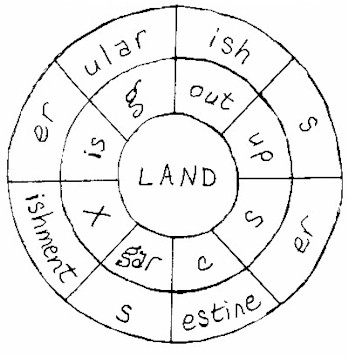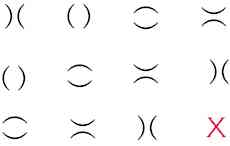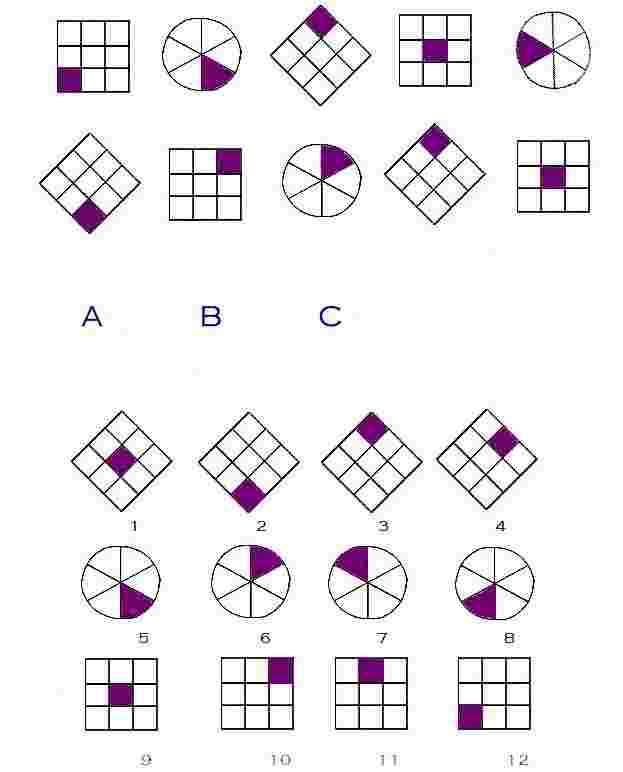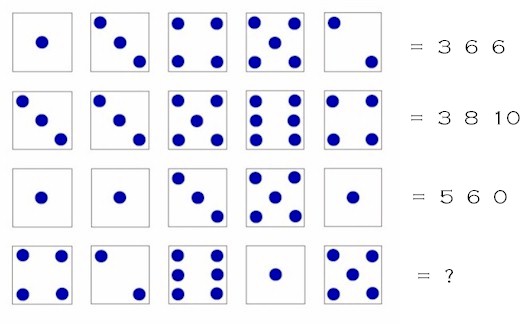Culturally Inane
Dumber Than You ThoughtWithout offering any data on all that occurs between conception and the age of kindergarten, - Walter Lippmann How many people today are conversant with either Latin or Greek? Nowadays, an educated person apparently needs to know Java, C++ or html as his or her second language - though these may sound like Greek to most of us. (I'm beginning to know enough to see how much there is to learn.) Illustration of the Cultural Bias of IQ TestsI believe IQ tests don't always measure what they seem to measure. Not only that, but progressive maturity indicates life "slides" down the DNA strand. This means different genes are ascendant at different stages of life. I believe this and other influences mean we can have different IQs at different periods in our lives. There's nothing like that feeling that we're better than others at something! If we no longer feel that way, but one time in our lives we did, then the next best thing is to re-live those times when we were tops. Say you were good at team sports in high school or university, perhaps a member of the varsity baseball team, then you may very well have spent your 20s, and even 30s, playing on your company's or your neighbourhood bar's baseball team. By your 40s, when you were slower, a little overweight, you may have found you no longer had the time or energy to actually play. Now, perhaps you talk a good game. You'll likely seek situations where you'll have the opportunity to talk about that no-hitter you pitched against East Kingston High. (Or how good you were at building soapbox racers as a kid. Or flying kites, or playing the saxophone.) I don't think it matters so much to you how good you actually were, it only matters how good you now think you were compared to the others who were doing it at the same time as you. (The benefits of boasting are current, not past, benefits.) Maybe you weren't athletically or musically inclined. Perhaps you were endowed with a great memory and were always the person who made the highest grades on history tests. But maybe events conspired such that you ended up a technical writer, postman, or cab driver. In your 20s and 30s, you may find you're really good at games like TRIVIA, and begin sitting up until midnight twice a week playing on some on-line computer information network. (Never mind that your friends and family members tell you that trivia is - well - trivial. The members of your team type sighs of relief when you sign on seconds before the big game is about to begin.) What if you once had a mind like a steel trap, but in your 40s and beyond you find rusty spots have allowed information to leak out like a sieve? Can you get the same satisfaction from sitting around the company cafeteria boasting about how smart you used to be as you can from talking about physical or sexual skills you once had? Perhaps we aren't talking about comparable things here. Is true intelligence something that may get less detailed, but become more of a storehouse of experiential knowledge, helping us to deal more effectively with life's vagaries as time wears on? Where does intelligence stop and trivia begin, anyway? From Test Your Intelligence by Norman Sullivan: Aptitude - an innate predilection for a certain subject or subjects, though it may allow ignorance of other subjects. Intelligence - the ability to reason quickly and logically in a subject, even though there is no natural aptitude for that subject; to be able to get to the root of a problem and from that arrive rationally, quickly, and correctly at the solution. In the section, "Overall Ratings..," we find: But take heart! Such tests only cover a limited number of subjects - mainly of an academic nature. It may well be that even if you had a very low score you are more adapted to tests requiring manual dexterity. A brilliant mathematician is not necessarily a good carpenter or gardener. Why not say, "A brilliant carpenter or gardener is not necessarily a good mathematician"? In Test Your Intelligence 2, also by Norman Sullivan, we find that: Heim (in The Appraisal of Intelligence) defines intelligence as "the ability to respond the most appropriately in any given situation and grasp and respond to the essentials in situations which baffle others." Intelligence is affected by genotypical characteristics, which are transferred in the genes at fertilisation and which steadily diminish or disappear from the moment of conception as they are taken over by phenotypical characteristics - that is, when environmental effects take precedence over genetic influences. Is one who can solve The Times crossword puzzle inside 30 minutes automatically more intelligent than one who cannot complete a simple crossword in two hours? Certainly, creative thinking, music, art or business acumen have not been convincingly measured by intelligence tests. I've taken many intelligence tests in my life. On some, I did exceedingly well. On others, I found the questions trivial or nonsensical. (See What Does It Mean to Be Schooled?) Who REALLY has a high IQ? Perhaps in reality there is no reality - there is only some test writer's instructions for the interpretation of test results. Black students in the US have historically made lower grades on IQ tests administered by schools. During their lives, they certainly gain the same amount of experience as whites, but their experiences may differ widely. What constitutes wisdom to a bushman of the Kalahari, to a 17-year-old on the street, to an overweight executive, to a politician, to a pastor? Can one IQ test possibly measure the wisdom (or potential for same) among such a disparate group? Maybe - but the tests I've seen aren't capable of doing that. All tests start out with loads of hidden assumptions - some of them the authors of the test may have been completely unaware of. (Because their own IQs were lower than they thought?) In Frames of Mind: the Theory of Multiple Intelligences, Howard Gardner theorises that we have not one intelligence, but seven. These include:
Gardner maintains that standardized IQ tests measure language and logical/mathematical abilities and a smattering of spatial skills. The other "intelligences," he feels,
are not measured (in part, because a comprehensive IQ test would be too difficult - and too expensive! - to administer and to evaluate). SAMPLE IQ TEST(The fact that it's hard does NOT say anything about its quality!) 1. Which word is the odd one out?[1]
2. In each of the following, find a word that can prefix all of the words in each group to form another word.
3. Mr Hoan has eight favourite letters, six of which are H, L, S, P, N and M. What are Mr Hoan's two other favourite letters? 4. Arrange the following into three groups of three:
5. What are the two longest words that can be typed using the top row of the typewriter keyboard? 6. What is X ? [2]
7. If 3(76) = 212 and 4(320) = 125, what is: 5(6100)? 8. Which symbol should take the place of X?
Assume the top figures are numbered 1, 2, 3, 4. Which numbered symbol is the answer? 9. What WORD is represented by X?
10. Which is the odd one out?
11. What should go into the empty segment?
12. Which words go into the brackets? Each word must logically follow the previous word and precede the next word, e.g. putting (GREEN) fingers. A ( ) GARDEN SPIRIT BEST SLAUGHTER BOAT HORSE BLACK DOG WOOD TOED 13. Here are seven common words. Which is the odd one out?
14. Which is the odd one out?
A
B
C
D
E
F 15. What letter starts the last word?
16. Find words for A, B, C, D, E, F, G, and H: paper spider apple pot gun collar dry cut paper 17. Which of the numbered figures at the bottom should take the places of A, B, and C?
18.
19. Which letter is in the wrong line? AHIMOSTUVWXY 20. What comes next? 13 122 83
314 305 3 163 21. Which is the odd one out?[3]
22. Which is the odd one out?
23. Three of these days have one thing in common. Which day does not share this common feature?
24. What are the next two terms in this series? 36 91 21 51 82 25. Which is the odd one out?
26. Which is the odd one out?[4] AIL
NOT
ROW 27. What is unique about the number 854917632? 28. When the following numbers are applied to MALT: 160934.4 what is MALT converted to? 29. What do the answers to the following clues all have in common?
ANSWERS1. POT
2. a. Eye; b. Air; c. Bed; d. Soap; e. Some; f. Pass; g. Ball; h. Front; i. Catch; j. Moon; k. Crack; l. Corn 3. B and D.
4. Frank, Ralph, Colin...all types of bird 5. Proprietory and Rupturewort. 6. B
7. 3020
8. 2
9. SEPTEMBER
10. C
11. elbi
12. A MARKET 13. B
14. C
15. V
16. paper 17. A 5 B 2 C 12
18. 2 4 12
19. S
20. 0
21. C
22. A
23. A
24. 3 and 0
25. C
26. Thread - The rest are all headless birds: (R)ail, (K)not, (C)row, (F)inch, (P)lover. 27. It contains the numbers 1 to 9 in alphabetical order. 28. Get out your conversion tables. Convert:
29. They were all British Prime Ministers: Heath, Home, Eden, Law, Peel, Grey, North. ENDNOTES[1] The first five problems are taken from A Challenging Book of Brain Teasers, compiled by Mensa UK
member Alan Wareham, Ward Lock, 1990.
So - how did you do? If this test were being used to determine whether or not you were admitted to university or qualified to immigrate, would you have made it? Also see:
For more articles, tests, film studies and visual amusements click the "Up" button below to take you to the Table of Contents for this Intellectual and Entertaining section. |
 Animals
Animals Animation
Animation Art of Playing Cards
Art of Playing Cards Drugs
Drugs Education
Education Environment
Environment Flying
Flying History
History Humour
Humour Immigration
Immigration Info/Tech
Info/Tech Intellectual/Entertaining
Intellectual/Entertaining Lifestyles
Lifestyles Men
Men Money/Politics/Law
Money/Politics/Law New Jersey
New Jersey Odds and Oddities
Odds and Oddities Older & Under
Older & Under Photography
Photography Prisons
Prisons Relationships
Relationships Science
Science Social/Cultural
Social/Cultural Terrorism
Terrorism Wellington
Wellington Working
Working Zero Return Investment
Zero Return Investment




